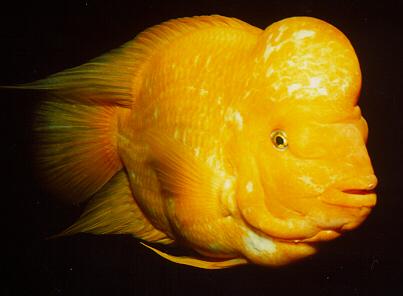Sex Determination in Fishes
Biology 342 Fall 2007
Authors: Candace Kam, Ben Kessler & Xeno Acharya
Changing Sex Among the Fishes

Changing Sex Among the Fishes
Unlike mammals, the sexes of many fish species are not set at birth. Over the course of a lifetime, males may become female, and females male, only to switch back again as environmental conditions change. Fish change sex in response to a number of cues, from altered social dynamics within the local population of conspecifics to fluctuations in the ambient water temperature. Throughout this website we'll be examining the factors that govern sex determination in the Midas cichlid, Cichlasoma citrinella, with a few detours to discuss other fish that evince similar hermaphroditic behavior.
Sex determination is defined as the process by which males and females develop in a population. Cichlids are a particularly good type of fish to study this phenomenon because of the many different factors that influence the sex of the fish.
Phylogeny, Ontogeny, Mechanism & Adaptive Value
The bulk of this website has been divided up into categories based on Nico Tinbergen's four points of interest to any ethologist. Detailed definitions of each of these terms can be found on the pertinent page, but to quickly characterize the split, we offer the following metaphor: If an organism were a skipping stone, phylogeny would refer to its genesis from mountain to lakeside pebble, ontogeny to its siezure by a beachcomber and subsequent flight through the air, mechanism to the stone's weight, shape, and aerodynamic characteristics, and adaptive value to the number of times it skipped across the water's surface before sinking into the gloom.
Key Terms
Sequential hermaphrodism: Functioning as one sex at one life stage and as the other sex during another phase
Primary sex: Initial sex; the sex the fish was born as
Secondary sex: Sex after change
Protandry: Primary sex male (i.e. fish born as male)
Protogyny: Primary sex female (i.e. fish born as female)